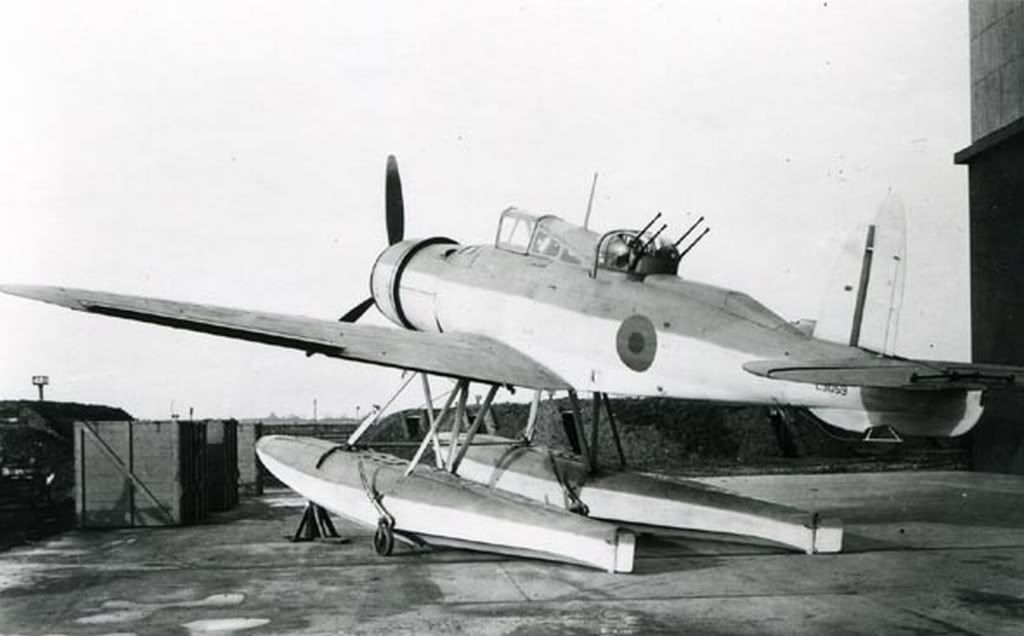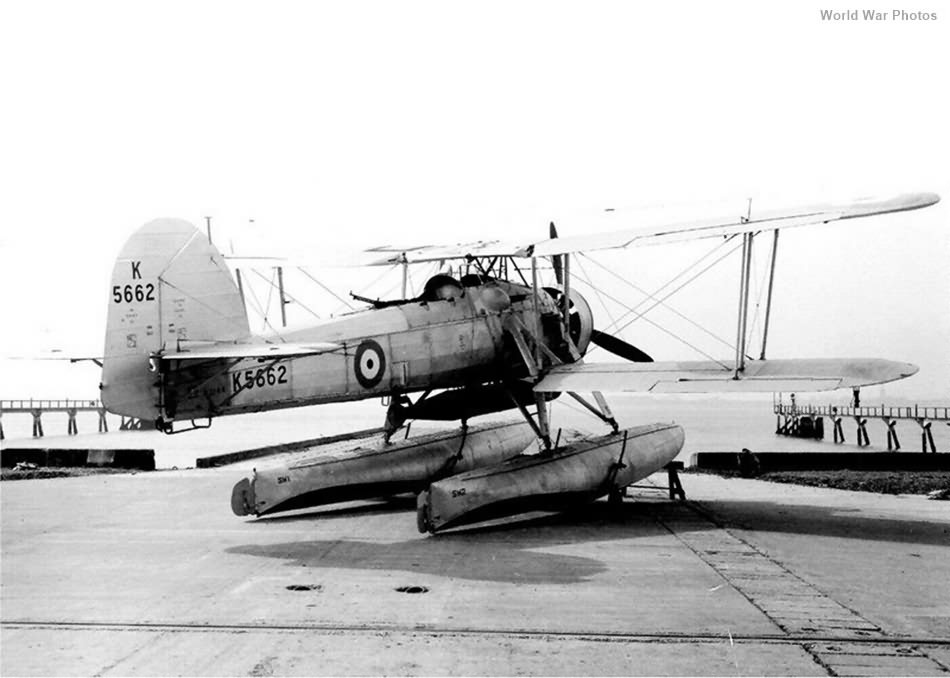The original layout of the Colossus / Neptune types is as shown below. They still carry the awkward wing turrets. Something I have been trying to eradicate from my Commonwealth Navy. Good old Fisher and his design work, building directions are hard to get rid of. The work I have done with the Dreadnought and Indomitable, fitting superimposed, inline, turrets to them, makes this next class of three ships interesting in that I can carry the aft three turret X Y Z layout on or go to the Q turret a class early. I will try a drawing of each to see what looks best and go from there.
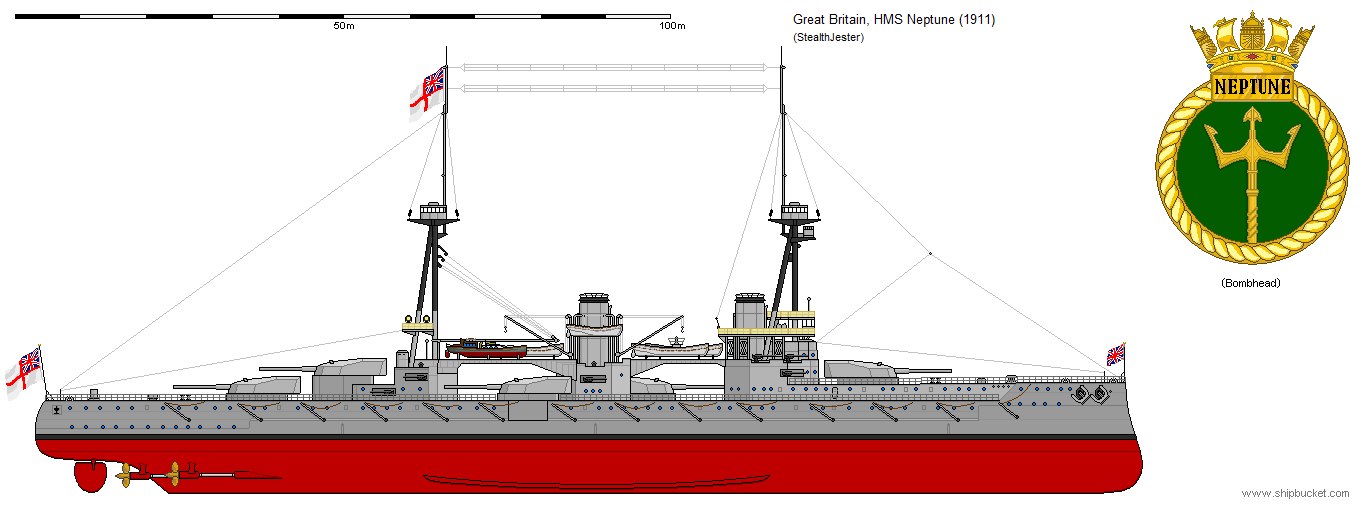
So lets have a look at an XYZ layout.
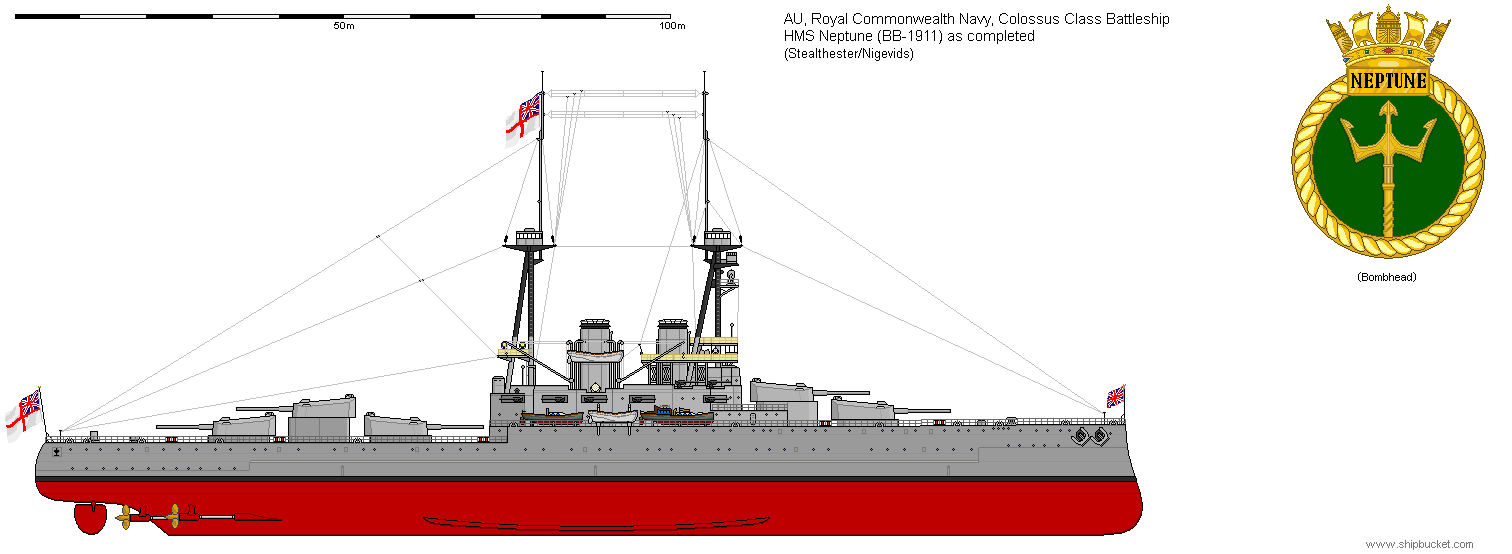
The drawing certainly looks better than the earlier Dreadnought and clone classes. The extra forty feet is well used to increase the size of the machinery rooms. The placement of the 4" secondaries in the superstructure actually proved a success compared to the casemates on the Dreadnought which were prone to being washed out in moderate to heavy weather.
So lets have a look at a Q design.
.png)
Now that is a more interesting looking ship than the XYZ variant. The weight is better balanced with the Q turret, while the turret itself does not lose any of the angles it could fire at in comparison to the X turret. The secondaries are kept in the superstructure but are reduced to twelve guns due to the changes in the superstructure layout. I can see these three ships being wanted by the minor powers because of the layout lending itself to modernisation in the future. Even Australis might change its two ships of this type to this version.
BUT...... I also convert at least one of the class to an aircraft carrier. If I can strip the 'R' class 15" battleships to provide guns and armour for a modern battleship class then convert the hulks to escort carriers, then why would I keep these 3 to 5 ships, when I could do the same to them. As I say on the 'R' Class page, 5 escort carriers arriving in the North Atlantic in 1940/41, miracles do happen. The same miracle could take place with these ships, but I can not think of a reason that would require these 3 to 5 ships to be converted to aircraft carriers in 1930-32. Unless they have been transferred to Australis, Zealandia, South Africa, where they could be kept as battleships, by 1923 the ships would already have been reduced in armament to make them compliant with the Washington Treaty if they were to be kept in the Royal Navy. I make the CV conversion date 1930-32 as the three ships would be 20 years old at that point and ready for the scrap yard. To keep them alive after that date would need them to be converted to something useful, either as ADV's or CVE's.
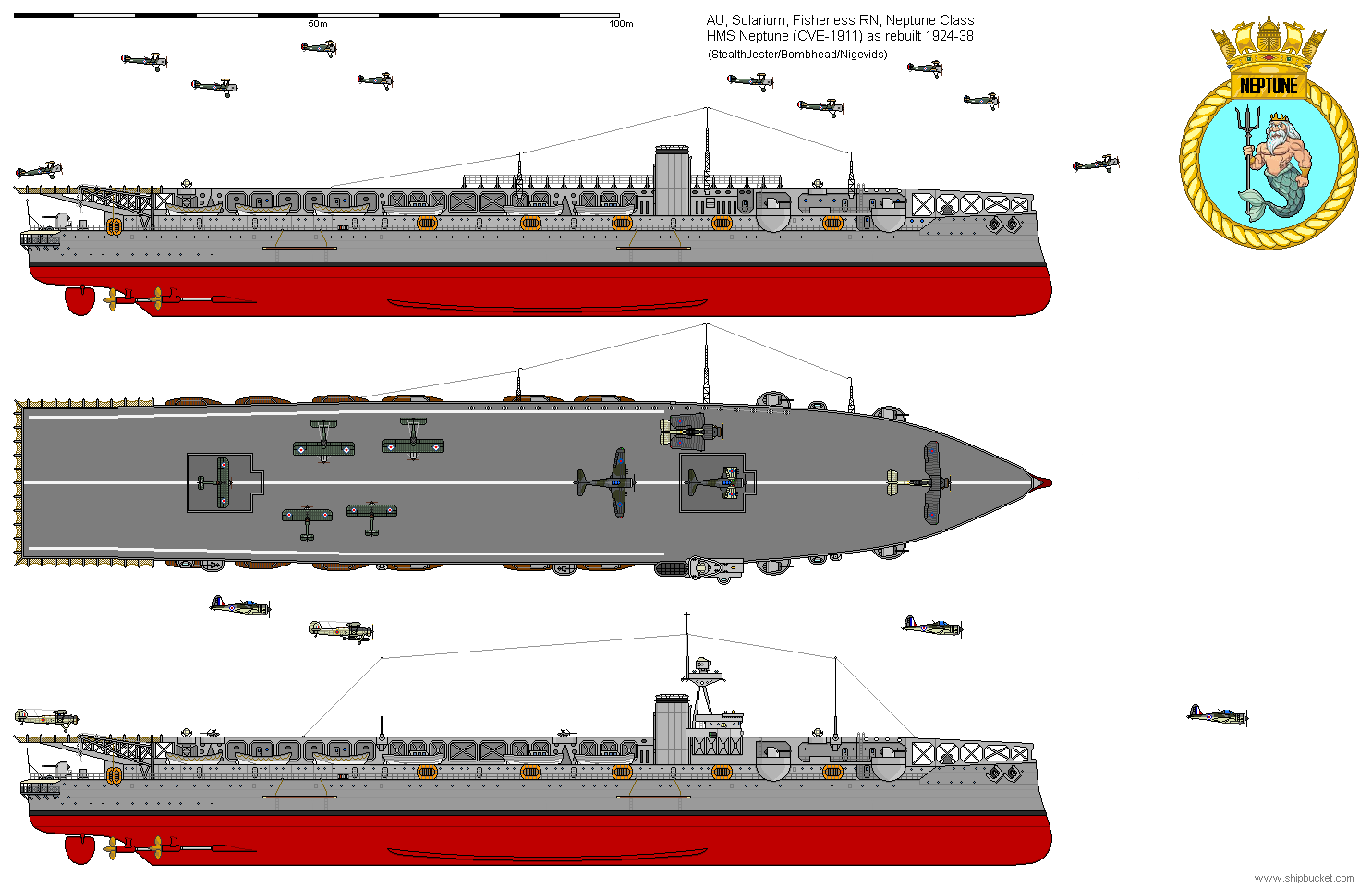
Knowing what we know now, with 20/20 hindsight, these would be fantastic as CVE's on the North Atlantic convoys in 1940-41. They would make a definite difference. But could the Admiralty think ten years ahead. Probably not. Battleship Bill would still be in command at the Admiralty and aircraft carriers would still be a low priority. It is much more likely that these three RN ships would go to ADV's. They would never have been converted to oil fired boilers. There would have been no reason to do so with these ships only being training ships or as static seaplane tenders. I normally in my AU convert one of these to a CVE to be the companion training carrier to the Argus, while the other two go to ADV's.
So, two more drawings. One as a converted battleship, early 1930's style with some AA guns, and then an ADV type. This is postulating that the Colossus and Hercules get transferred to South Africa and Australis as training ships. If the battleships were converted as I show below to modern looking ships during 1931-33, they would not have been converted further. The work to get them into this condition would have been costly enough that the navies involved would not want to undo it to convert the hull to an aircraft carrier. For these conversions the boilers would have been converted from coal to oil firing.
.png)
The ADV conversions for the Indian and Atlantic Oceans have access to much more significant resources closer to hand than those that may be destined for the Pacific. The island groups that have airfields on them are few and far between. The ADV can sit in a lagoon and act as mothership to the big flying boats and provide all the services required.
.png)
The Colossus, Auckland, and Gascoyne were all converted to ADV's as being the most useful type to operate the flying boats. This work was trialed through the islands and found to be a successful operation. These ships would prove invaluable during the coming war. Only Hercules was retained in its battleship variant and operated as a training ship with the Southern African Navy. The Neptune was the only one of the five to be converted to an aircraft carrier. Neptune was paired with the Argus as the extra training carrier which was extremely useful from 1938 onward when the great expansion of the Fleet Air Arm started. The Neptune was used sparingly on other duties as the training work it was doing was of such high priority.
